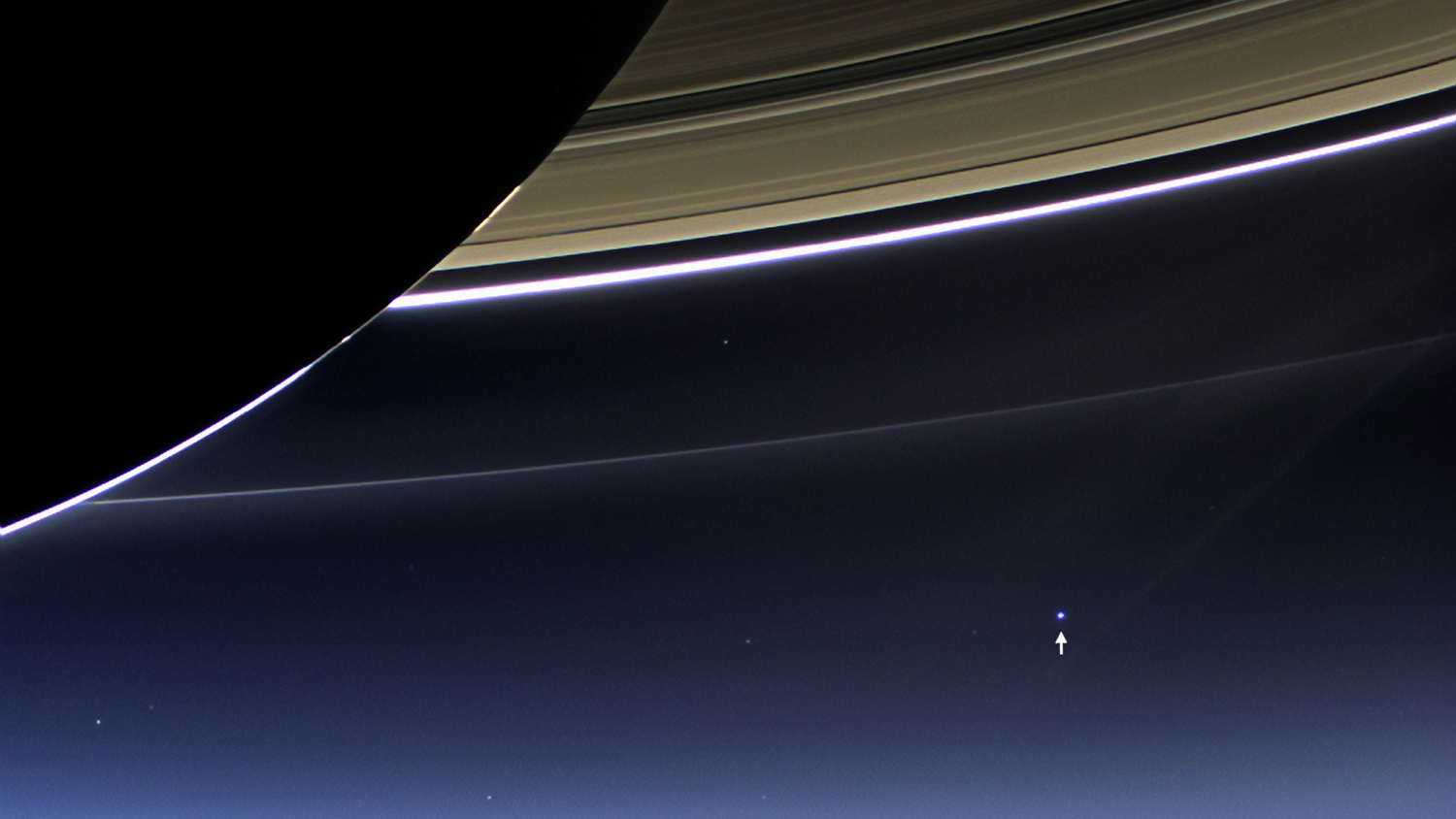Epic NASA Photos of Earth from Saturn & Mercury Give Us Perspective

It's not often that some event comes along to really show humanity its true place in the universe, but two NASA spacecraft have just managed just that.
I'm talking, of course, about the spectacular NASA photos of Earth as it appeared from Saturn —nearly 900 million miles away (1.4 billion kilometers) —as well as a photo of our planet as it appeared from Mercury, nearly 61 million miles (98 million km) distant. NASA took the photos Friday (July 19) using the Cassini spacecraft around Saturn and the Messenger spacecraft around Mercury as part of a global campaign to show the world how the solar system views our planet Earth. The space agency even worked to coordinate campaigns to involve space fans by having them wave at Saturn. The images, by far, are amazing. Earth and its moon stand out as bright pinpricks of light in Messenger's view from Mercury, while our planet is a pale, fuzzy dot nestled between Saturn's rings in the Cassini view.
From my perspective, the images accomplish two things: First, it seems like a technological marvel of orbital mechanics and photography to be able to coordinate two different spacecraft in orbit around two different planets (and controlled by different science teams) to photograph yet a third planet in between them. What's more, this is not the first time Cassini and Messenger have snapped photos of Earth from their respective planets. Cassini has done it a couple of times, and Messenger took a portrait of the solar system from Mercury in 2011. Second, the photos clearly do what they were intended to do— show the world exactly where Earth stands in the universe. You, and everyone you know and have ever known, live on a tiny island of a planet in the vast sea of the universe. As the "Star Trek" warp drive inventor Zephram Cochrane explained when he first saw Earth from deep space, "It's so small." And that is where we live, on a small world —a "pale blue dot," as famed astronomer Carl Sagan once put it. This is our home, this island Earth. [See more photos of Earth from Saturn and Mercury]
So what do you think of Cassini and Messenger's view of Earth from Saturn and Mercury? Has it given you a new sense of perspective? Or are they just more photos from old space probes retasked into a publicity stunt?
This story was provided by SPACE.com, a sister site to LiveScience. Email Tariq Malik at tmalik@space.com or follow him @tariqjmalikand Google+. Follow us @Spacedotcom, Facebookand Google+
Get the world’s most fascinating discoveries delivered straight to your inbox.

Tariq is the editor-in-chief of Live Science's sister site Space.com. He joined the team in 2001 as a staff writer, and later editor, focusing on human spaceflight, exploration and space science. Before joining Space.com, Tariq was a staff reporter for The Los Angeles Times, covering education and city beats in La Habra, Fullerton and Huntington Beach. He is also an Eagle Scout (yes, he has the Space Exploration merit badge) and went to Space Camp four times. He has journalism degrees from the University of Southern California and New York University.




